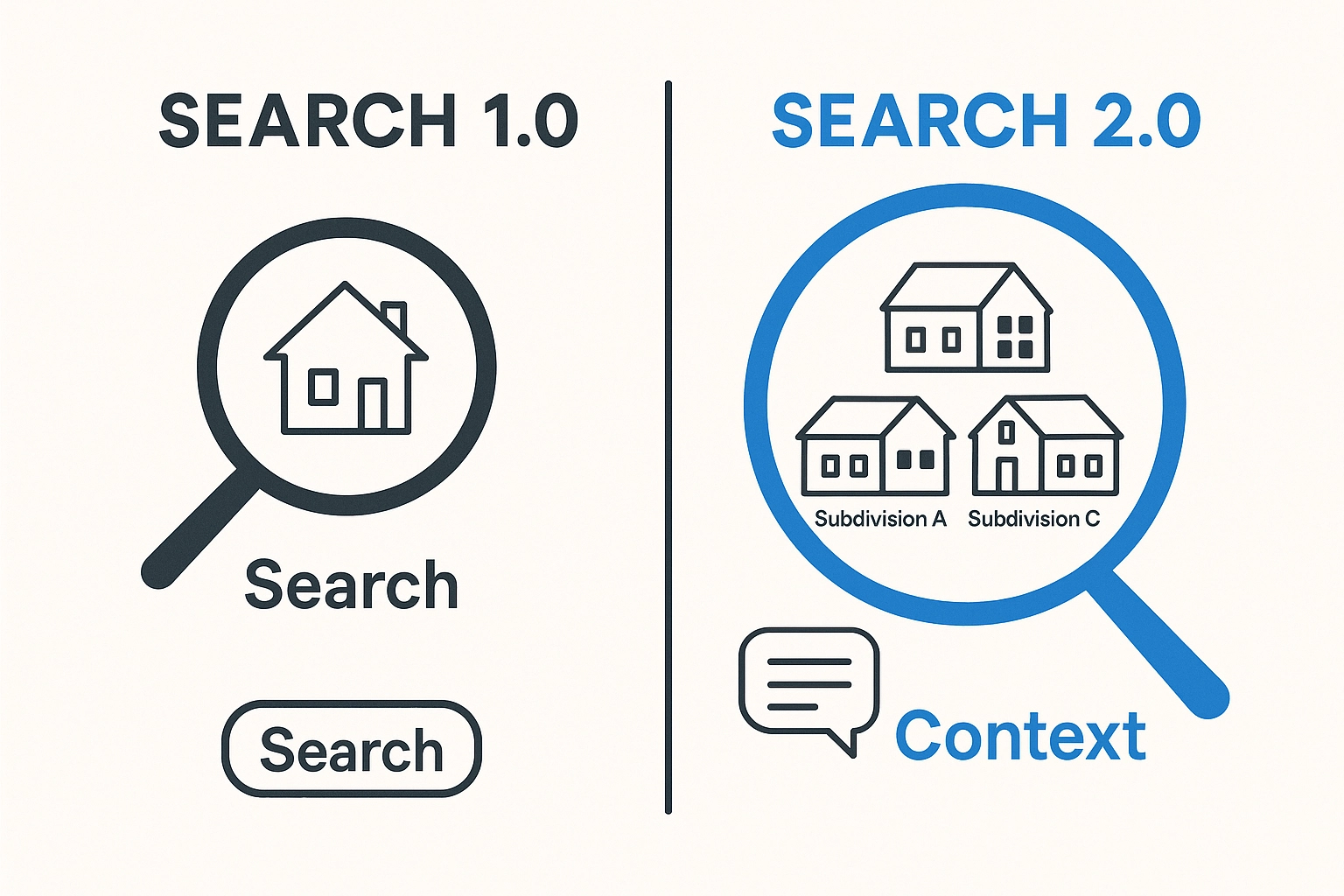🔍 Real Estate Search 1.0 vs. Search 2.0: Why Context Matters
For years, real estate search has looked the same.
Type in a city or zip code. Scroll through endless listings.
Filter by beds, baths, and price.
This is Search 1.0 — a flat, one-dimensional experience. Useful, but limited.
🚫 The Limits of Search 1.0
Keyword-driven: You get results only if you know exactly what to type.
Flat filters: Beds, baths, price — but no sense of community or lifestyle.
Isolated listings: Each property is shown alone, without meaningful context.
Consumer confusion: Buyers spend hours comparing “apples to oranges,” not knowing which homes or neighborhoods are truly comparable.
It works… but it’s not smart. It’s not contextual.
🌐 Enter Search 2.0: Discovery with Context
Search 2.0 is about discovery — not just retrieval.
It’s about surfacing relevant insights and helping consumers make sense of their options.
This is where Subdivisions.com leads:
Subdivision-level intelligence: Instead of just “3-bed condos in Miami,” you see Ocean One vs. Ocean Two vs. Ocean Three — side by side.
Apples-to-apples comparisons: Every property is contextualized against its neighbors, its subdivision trends, and its true market position.
Micro-market analytics: Price per square foot, turnover, sales velocity, rental trends — broken down at the community level, not just city or zip code.
Discovery engine: Don’t just search — find better alternatives you didn’t know to ask for.
🏡 What This Means for Buyers, Sellers & Agents
Buyers save time by comparing like to like instead of drowning in mismatched listings.
Sellers get smarter positioning by seeing how their home stacks up in the actual neighborhood market, not just against random comps.
Agents gain a professional edge with proprietary insights that no MLS or portal provides.
📌 The Bottom Line
Search 1.0 is about listings.
Search 2.0 is about context.
And context is what transforms data into decisions.
That’s what separates Subdivisions.com — not just another search portal, but the foundation of real estate discovery with context.




Comments